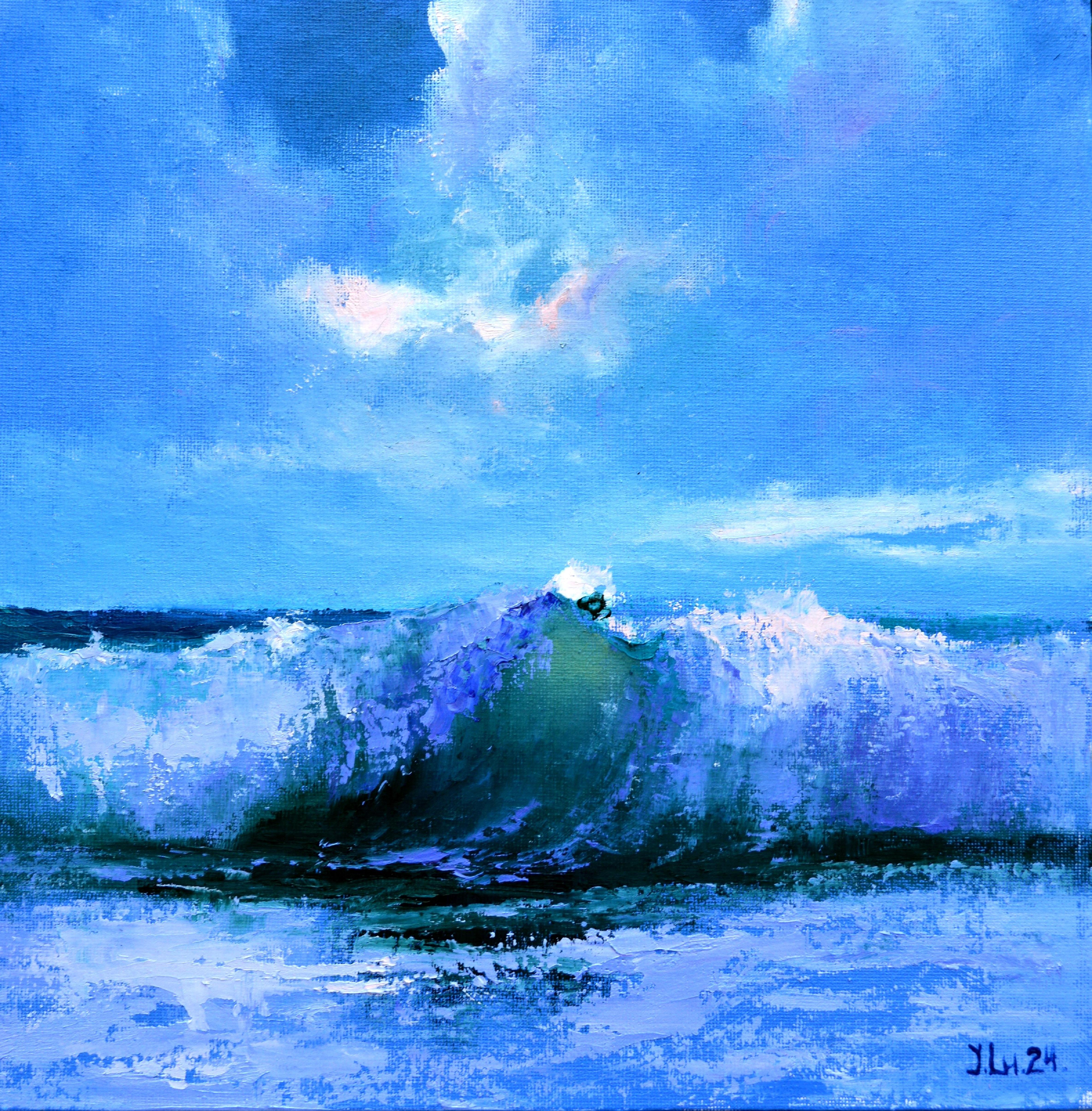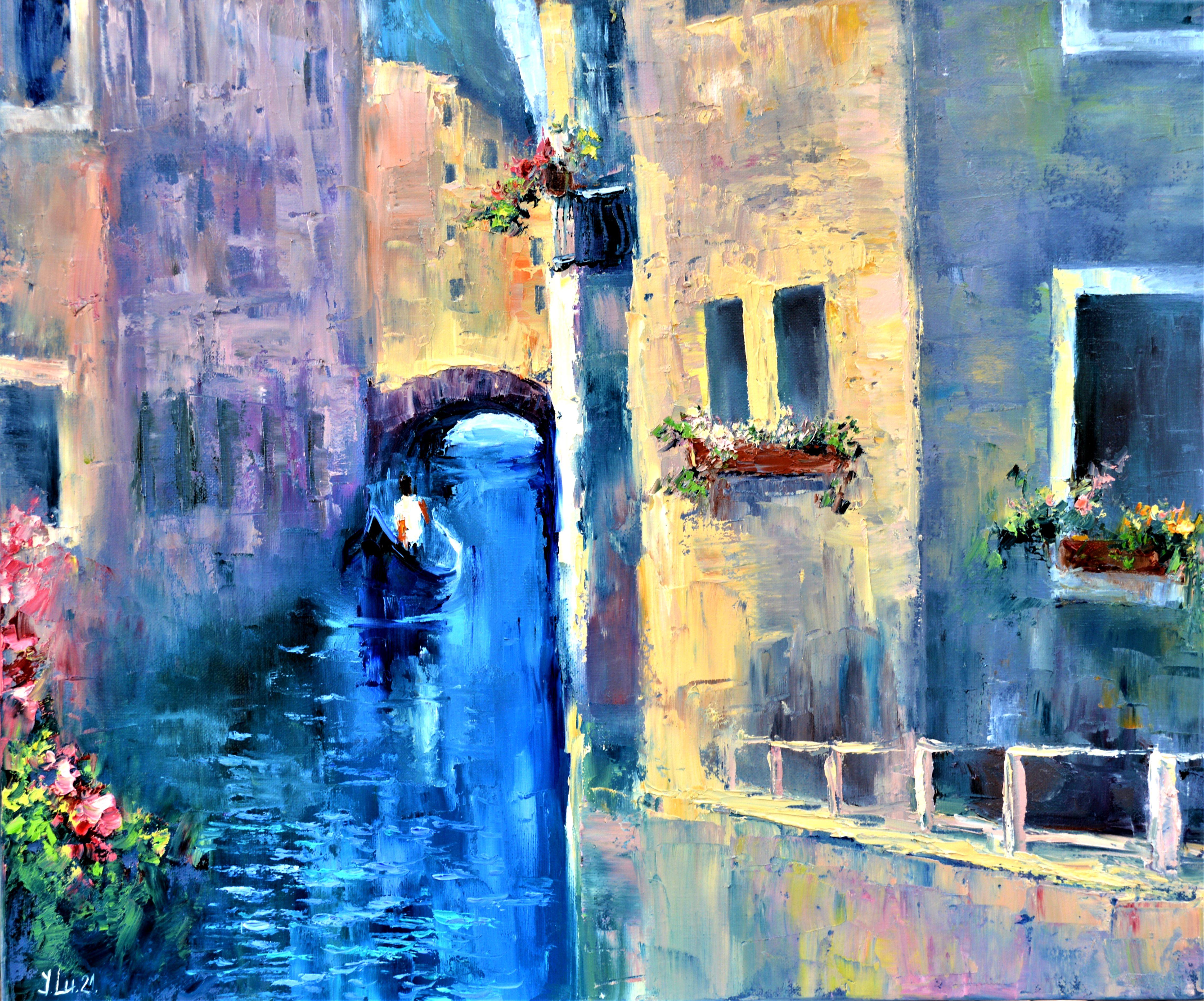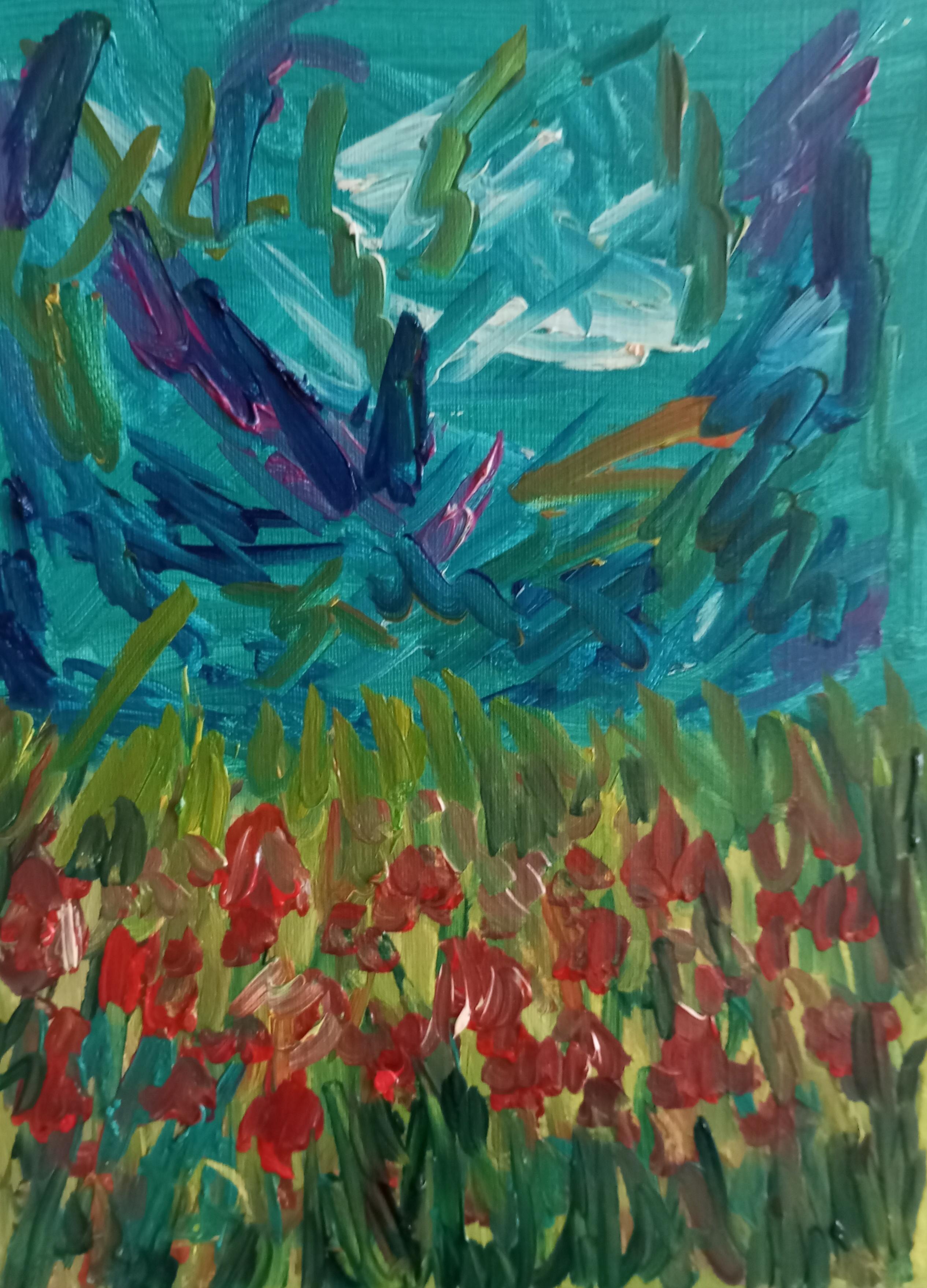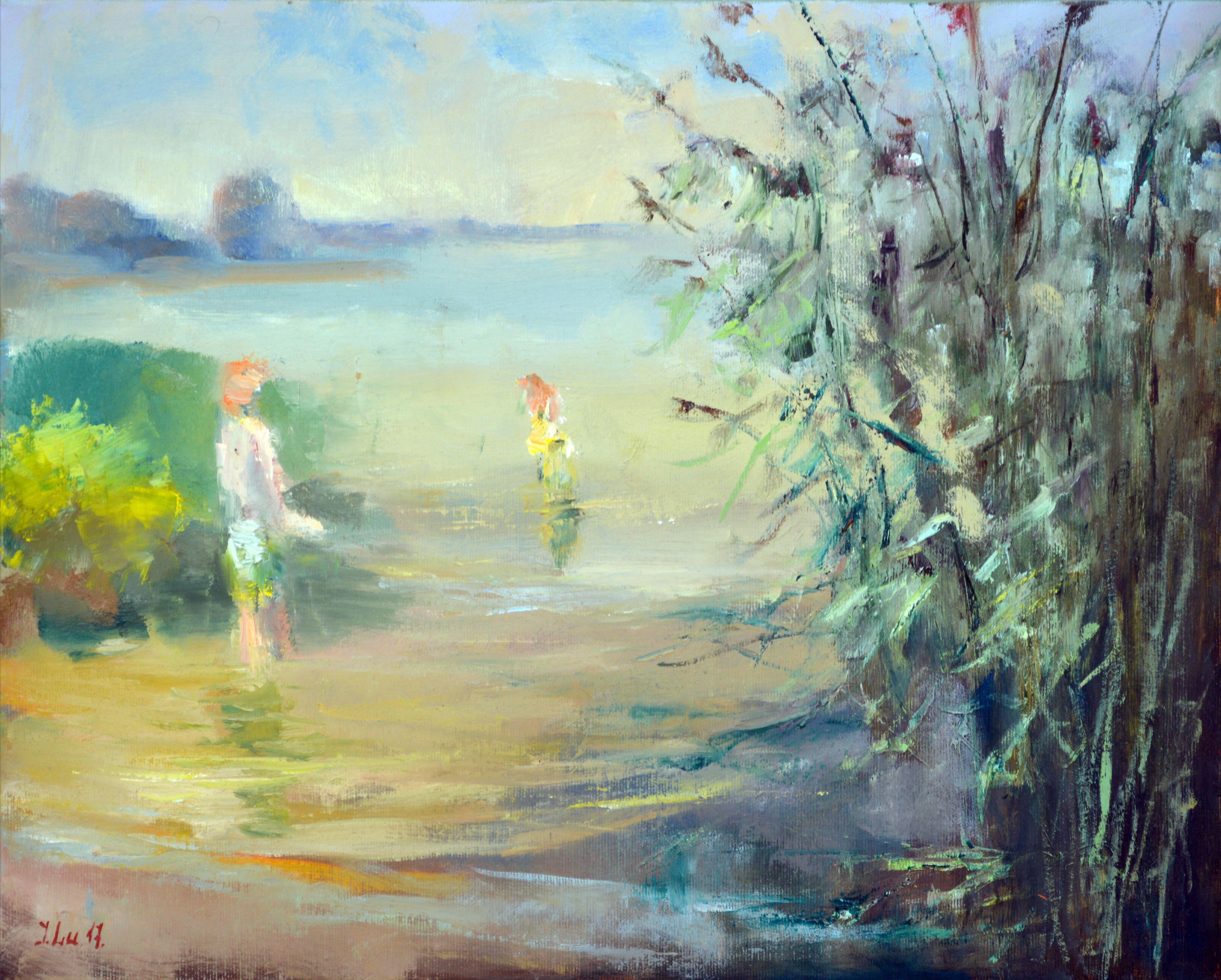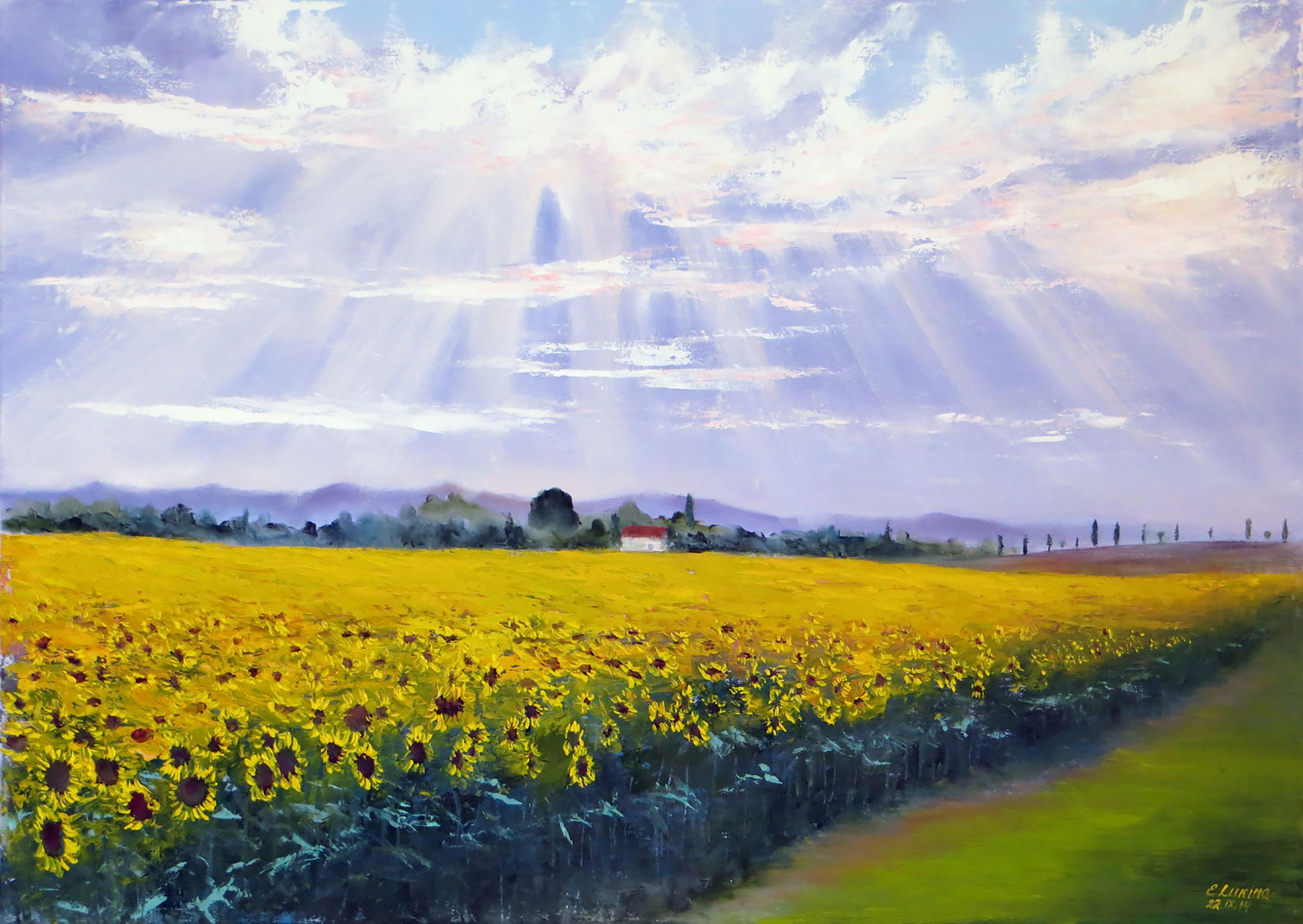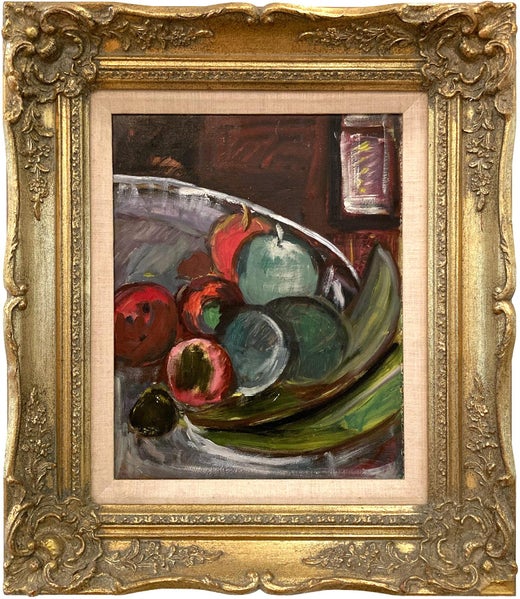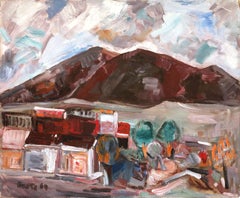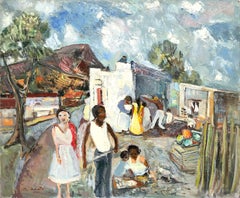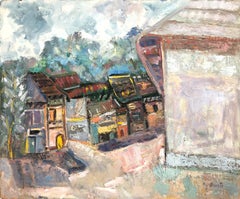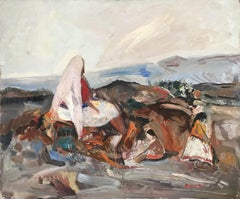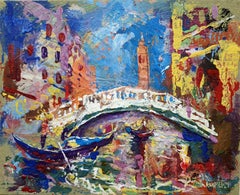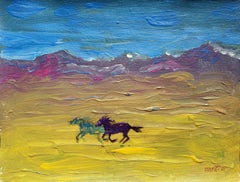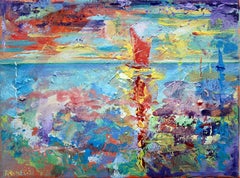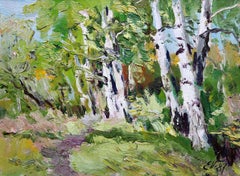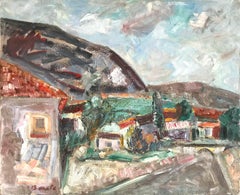
"Mexican Village Landscape Scene with Houses" Expressionistic Style Oil Painting
View Similar Items
Michael Baxte"Mexican Village Landscape Scene with Houses" Expressionistic Style Oil PaintingMid-20th Century
Mid-20th Century
About the Item
- Creator:Michael Baxte (1890 - 1972, Russian)
- Creation Year:Mid-20th Century
- Dimensions:Height: 19.75 in (50.17 cm)Width: 24 in (60.96 cm)Depth: 0.25 in (6.35 mm)
- Medium:
- Movement & Style:
- Period:
- Condition:This piece is in very condition besides some wear on the outer edge of the board from age and some noticeable water damage on the back of the board that did not affect the front of the artwork.
- Gallery Location:New York, NY
- Reference Number:Seller: 0021191stDibs: LU9822581253
Michael Baxte
Michael Baxte was an American painter. His work was part of the painting event in the art competition at the 1936 Summer Olympics. During the 1930s Baxte and his wife, Violet, lived in France and spent most of their time in Paris, where Baxte became part of the School of Paris and exhibited his artwork in government-sponsored exhibitions, including the Salon d'Automne, helping as well to organize an exhibition of American painters. When World War II began, and Paris became unsafe, Baxte and his wife relocated to Mexico, where they continued to live and work. Baxte died in 1972 in Mexico.
More From This Seller
View All1960s Expressionist Landscape Paintings
Oil, Masonite
1960s Expressionist Landscape Paintings
Oil, Masonite
1960s Expressionist Landscape Paintings
Oil, Masonite
1960s Expressionist Figurative Paintings
Oil, Masonite
Mid-20th Century Expressionist Figurative Paintings
Oil, Masonite
1960s Expressionist Landscape Paintings
Oil, Masonite
You May Also Like
2010s Expressionist Landscape Paintings
Oil, Acrylic, Cardboard
2010s Expressionist Landscape Paintings
Oil, Acrylic, Cardboard
2010s Expressionist Landscape Paintings
Oil, Acrylic, Cardboard
1980s Expressionist Landscape Paintings
Oil, Cardboard
1910s Expressionist Landscape Paintings
Oil, Cardboard
2010s Expressionist Abstract Paintings
Oil, Acrylic, Cardboard
